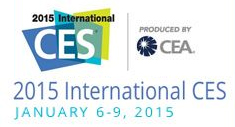
 The International Consumer Electronics Show (CES) in Las Vegas sets the stage for each new year, and the 2015 edition was no exception. Once largely about home audio, TVs, and car stereo, CES has evolved into a must-attend event for every stakeholder in the digital content value chain; from content creation to the point of consumption and every stage in between. Hence, most of the TV service delivery infrastructure players either had booths on the trade show floor, had suites in the nearby hotels, or did both; and most pay TV operators were there as well.
The International Consumer Electronics Show (CES) in Las Vegas sets the stage for each new year, and the 2015 edition was no exception. Once largely about home audio, TVs, and car stereo, CES has evolved into a must-attend event for every stakeholder in the digital content value chain; from content creation to the point of consumption and every stage in between. Hence, most of the TV service delivery infrastructure players either had booths on the trade show floor, had suites in the nearby hotels, or did both; and most pay TV operators were there as well.
It must be a huge challenge for the Consumer Electronics Association to select winners of the CES Innovation Awards each year, and being ‘just one guy,’ I won’t even pretend to emulate this task. But I found three items during CES to be especially noteworthy – and taken together, emblematic of the larger trend of platform and service virtualization.
Of great significance is DISH Network‘s continuing evolution as an alternative kind of ‘TV Everywhere’ provider. By launching Sling TV, DISH has both elevated the expectations of what online TV should be, and while it isn’t perfect, has deliberately moved to address the demographic that the pay TV industry is the most concerned about losing: millennials. In my opinion, DISH has been the most forward-thinking of the US pay TV operators in the area of online TV. DISH also announced a new user experience, a track-pad-based TV remote control with speech recognition and a new 4K Joey client set-top box for its Hopper with Sling home media center. DISH’s sibling company EchoStar used CES for the US launch of a new home security and home control offering called SAGE, which EchoStar also demonstrated a few months back at IBC.
Also noteworthy was cable operator Charter Communications‘ new WorldBox set-top box, Spectrum EPG and user experience. Unlike the direction being taken by other Tier-1 cable operators, and in particular with the RDK, where the adopters must have RDK-specific set-top boxes and must upgrade their networks to all-IP distribution in order to realize the full potential, Charter has partnered with Cisco and Active Video Networks to introduce an experience that can be deployed to decade-old set-top boxes as well as new IP video-capable ones. Yet, at the same time, it’s a multiscreen solution. Further details are in my article for CED Magazine.
But to me, the highlight of CES wasn’t at CES itself, but rather, was AT&T’s 2015 Developer Summit and Hackathon at the nearby Palms Resort in Las Vegas. While most pay TV operators advance their features in carefully controlled increments, AT&T offers APIs that allow it to essentially open-source its entire network, and has invited developers of all kinds to play in their sandbox. By doing so, AT&T is providing keys to the kingdom to any developer that helps drive traffic over the AT&T network. While other pay TV operators are taking their first steps into home security and home control, AT&T has not only opened AT&T Digital Life (not to mention its AT&T U-verse pay TV platform) to third party developers, but enables development for mobility, connected vehicles, wearables, and the industrial ‘Internet of Things.’ And a host of partnered developers were there in support.
DISH, AT&T and Charter are each “coloring outside the lines” of conventional wisdom, and I’ll be writing more about each of them in the coming week.

